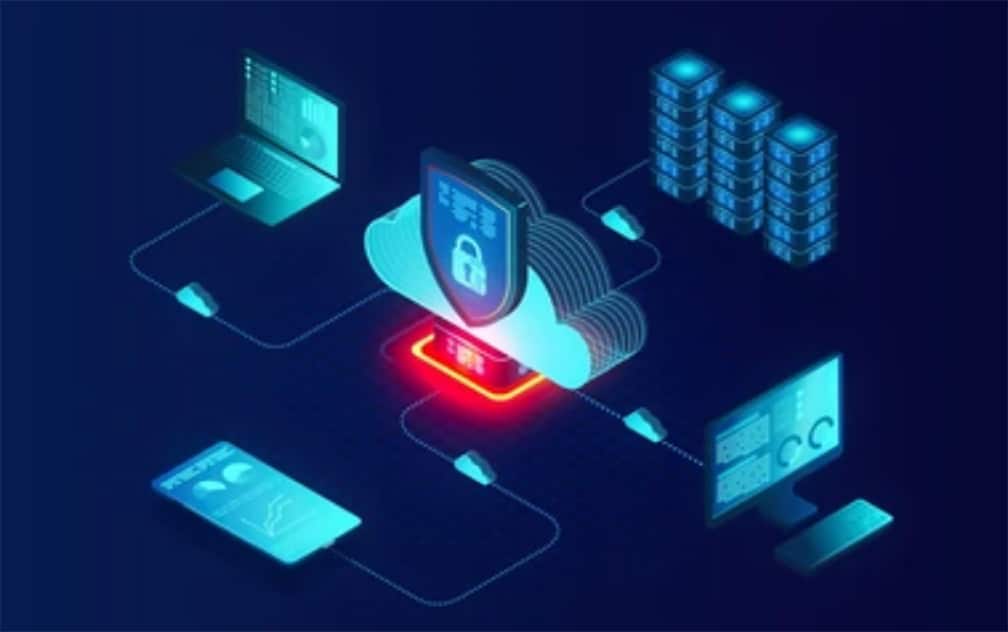When protecting an organization’s IT system and data, robust cybersecurity measures are a must. Many enterprises utilize traditional security measures such as antivirus software and firewalls to combat cyber threats. Unfortunately, it’s simply not enough anymore. Cyber threats are becoming more sophisticated, using several advanced tools to enable malicious activity within networks. Organizations must go beyond traditional security measures and create a proactive and layered approach to meet the threat of potential cyber-attacks. One critical weapon to add to your organization’s cybersecurity arsenal is endpoint detection and response.
What is Endpoint Detection and Response (EDR)?
Endpoint Detection and Response (EDR) is a proactive cybersecurity measure that seeks out and identifies any threat that enters an IT environment by focusing on the endpoint. Also known as endpoint detection and threat response (EDTR), EDR is tasked with stopping the threat and eliminating its chance to spread. When deploying EDR solutions, users get advanced analytics and real-time monitoring on end-user devices like smartphones, tablets, and laptops. With detailed visibility and quick response time, EDR is a valuable tool that helps organizations safeguard their devices and networks from cyber-attacks.
How Does EDR Work?
EDR does a deep dive into all of the activities and events that have occurred on endpoints. Every stone is uncovered, so to speak, to provide a detailed record for security teams to gain a full understanding of the threat. With EDR, some seemingly insignificant details may be noticed. EDR works like Sherlock Holmes, conducting an extensive inquiry into the entire lifecycle of the threat. How did the threat get in? Where did it start? What did it do to the IT environment? What is it currently doing? Where does it plan to strike next? EDR solutions provide comprehensive visibility for endpoint interactions and workloads in real-time.
Importance of EDR
Cyber threats are inevitable. It’s not a question of if but when. Just like a properly locked bicycle on the street, defenses can be broken with the right tools, time, and motivation. The importance of EDR in an organization’s endpoint security strategy cannot be overstated.
Prevention Isn’t Enough
If no one is home once the house has been broken into, cyber thieves will take advantage of each precious second by diving deeper into the network. With nothing stopping them, the damage hackers can inflict is limitless.
Squatter’s Rights
Since no one told them no, hackers can create back doors to get into the network anytime. Organizations may be unaware the initial breach occurred until a customer or law enforcement brings it to their attention. An eternity may have passed before the unwelcomed guests get the boot.
Poor Endpoint Visibility
Even if a breach is discovered, organizations may be blind to the root cause. The backdoor may remain open while extensive time and money are focused on repairing the damage. Cyberthieves may still come back and wreak havoc on a network. To the horror of the victim organization, the vicious cycle continues until they truly understand how it all began in the first place.
Lack of Intelligence
Organizations can quickly avoid a cyber breach with a detailed record of endpoint activity and events. EDR allows enterprises to record, store, and access relevant security information at any time to weed out cyber threats swiftly.
Interpretation
It’s one thing to deploy event collection software but quite another to know what to do with it. Once data is collected, security teams need to be able to decipher the information in a way that countermeasures can become actionable. EDR knows what to look for and how to address the threat.
Costly Repairs
Without EDR, organizations can be paralyzed. Deciding how best to move forward after a cyber attack can cost precious time and money. The longer a business is out of commission, the more expensive it gets. Consumers begin to lose confidence in the organization’s products and services, giving a black eye to their reputation.
Uses of EDR
The importance of EDR cannot be overstated. It offers several critical cybersecurity measures. Beyond traditional cybersecurity methods, EDR has advanced threat detection capabilities that can sniff out otherwise undetectable issues. A key element to defusing a threat is time. Risks can be mitigated more effectively if a security measure has the chance to move fast. The real-time visibility of endpoint activity allows EDR to respond with extreme speed. In quick succession, an organization has the power with EDR to assess security, identify weaknesses, and activate countermeasures. An eager hunter, EDR uncovers the root causes of cybersecurity breaches. It contains and limits threats while safeguarding the loss of sensitive data. Just as important, EDR allows organizations to meet compliance requirements and strengthen their security posture. The following are nine key features of EDR.
Endpoint devices enjoy continuous monitoring from EDR tools. Any hint of suspicious activity will alert the EDR trip wire. With real-time visibility, security teams will receive alerts instantly.
Threat Detection and Prevention
Monitoring in Real Time
EDR offers a wide range of advanced analytics, behavior analysis techniques, and machine learning algorithms to flush out all threats to endpoint devices. Proactive threat prevention is engaged to mitigate risks.
Swift Incident Response
With comprehensive data and analysis, EDR can supply security teams with the relevant information to activate appropriate countermeasures. It also allows security teams to address security measures so that the incident won’t be repeated.
Endpoint Visibility
EDR gives security teams comprehensive visibility of all enterprise network endpoint devices. From device inventory to software versions and more, organizations can identify potential cyber threats coming their way.
Deep Dive Analysis
EDR goes back in time with its detailed analysis of endpoint activity, network connections, and user actions. Root causes can be brought to light with the historical data EDR provides.
Hunting for Threats
Security teams can release the EDR “hounds” on targeted searches across all endpoints for potential threats. If a hidden threat is dug in like a tick, EDR tools will find it, even if they escaped detection from other traditional security measures.
Endpoint Containment
If endpoints are compromised, EDR will isolate the threat and block it from causing more harm. EDR will also help restore the afflicted system to a safe and secure state.
Advanced Analytics
Security teams can identify malicious patterns, trends, and anomalies with advanced analytics. Comprehensive reports help organizations assess threats and meet compliance requirements.
Cyber Security Integration
EDR tools can safely integrate seamlessly with other traditional cybersecurity tools. Adding EDR enhances an organization’s countermeasures by creating a more robust and layered cybersecurity strategy.
Cynergy Technology has over forty-two years of experience supporting organizations with IT solutions, including cybersecurity measures. We have a wide range of cybersecurity solutions to combat the ever-evolving threat of cyberattacks, such as anti-phishing, penetration testing, vulnerability assessments, and more. If you’d like to add EDR to your cybersecurity strategy, let Cynergy Technology be your guide. Contact us today for a free consultation and to learn more about EDR solutions for your enterprise.







